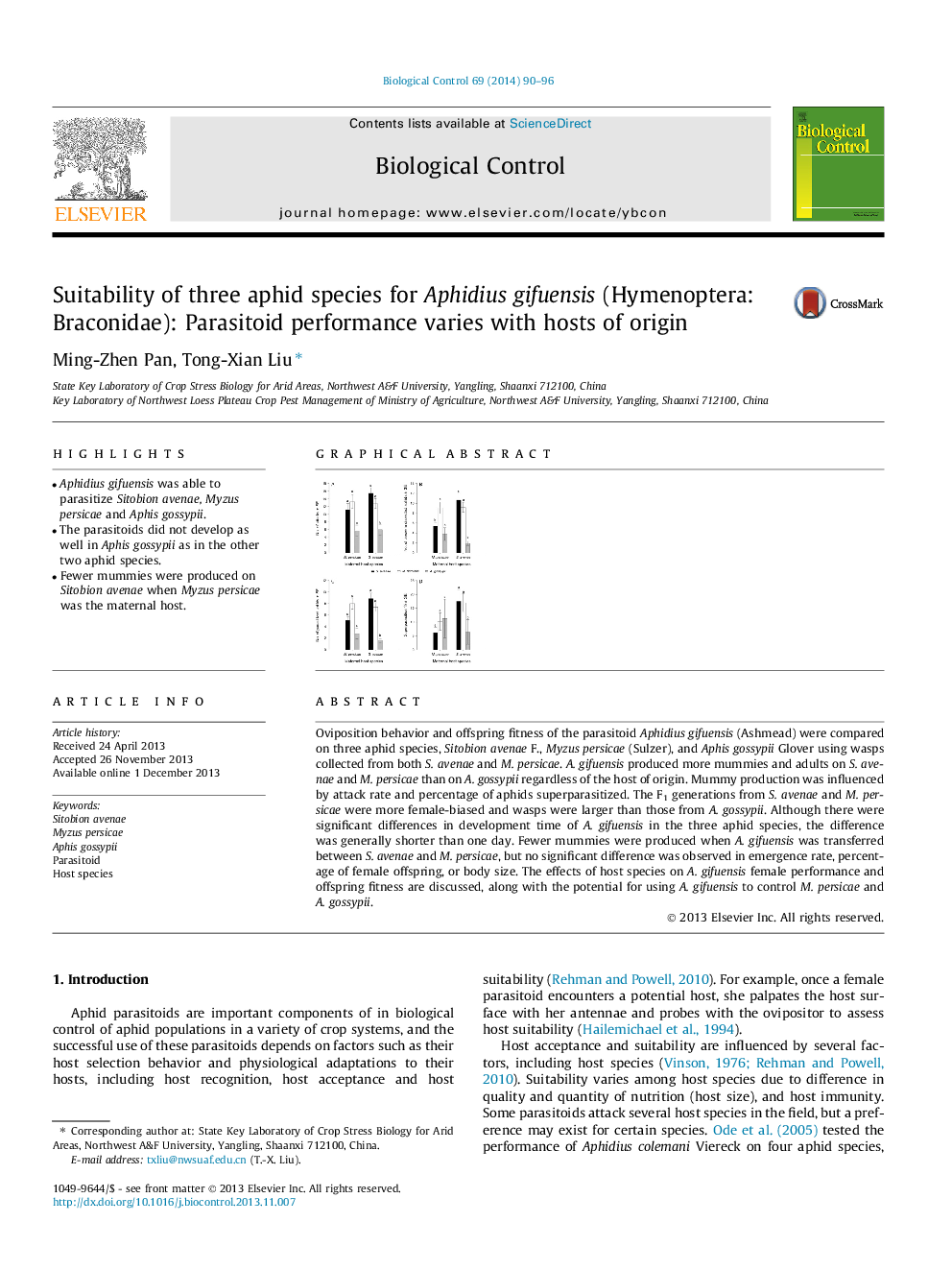| کد مقاله | کد نشریه | سال انتشار | مقاله انگلیسی | نسخه تمام متن |
|---|---|---|---|---|
| 4503986 | 1624265 | 2014 | 7 صفحه PDF | دانلود رایگان |

• Aphidius gifuensis was able to parasitize Sitobion avenae, Myzus persicae and Aphis gossypii.
• The parasitoids did not develop as well in Aphis gossypii as in the other two aphid species.
• Fewer mummies were produced on Sitobion avenae when Myzus persicae was the maternal host.
Oviposition behavior and offspring fitness of the parasitoid Aphidius gifuensis (Ashmead) were compared on three aphid species, Sitobion avenae F., Myzus persicae (Sulzer), and Aphis gossypii Glover using wasps collected from both S. avenae and M. persicae. A. gifuensis produced more mummies and adults on S. avenae and M. persicae than on A. gossypii regardless of the host of origin. Mummy production was influenced by attack rate and percentage of aphids superparasitized. The F1 generations from S. avenae and M. persicae were more female-biased and wasps were larger than those from A. gossypii. Although there were significant differences in development time of A. gifuensis in the three aphid species, the difference was generally shorter than one day. Fewer mummies were produced when A. gifuensis was transferred between S. avenae and M. persicae, but no significant difference was observed in emergence rate, percentage of female offspring, or body size. The effects of host species on A. gifuensis female performance and offspring fitness are discussed, along with the potential for using A. gifuensis to control M. persicae and A. gossypii.
Figure optionsDownload as PowerPoint slide
Journal: Biological Control - Volume 69, February 2014, Pages 90–96